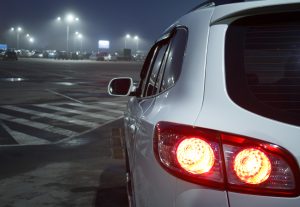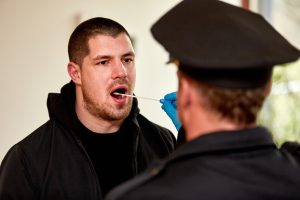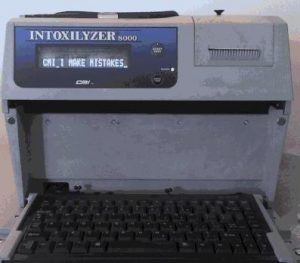
You may be more of a target than you think. When you think about people arrested for drunk driving, do you picture a car driving erratically all over the road? That’s a common misconception. Most stops resulting in DUI/OVI charges are for minor offenses: failing to signal, driving a little over the speed limit, crossing a lane line one time. Some are even for non-moving violations: burned-out headlight, no license plate light, expired registration. A case decided last week by the Ohio Supreme Court illustrates how a minor violation can lead to more serious charges.
 Columbus OVI/DUI Attorney Blog
Columbus OVI/DUI Attorney Blog



 The ever-growing number of states which have legalized either medical marijuana or recreational marijuana has created a number of issues for law enforcement and the justice system. Chief among those issues is the challenge of enforcing laws against operating a vehicle under the influence of marijuana. In an effort to overcome this challenge, the Norwegian company Drauger developed the DrugTest 5000. This system uses a mouth swab, taken roadside, to help determine if a driver is under the influence of marijuana or other drugs. The DrugTest 5000 has been in use in Norway since 2015 and has seen
The ever-growing number of states which have legalized either medical marijuana or recreational marijuana has created a number of issues for law enforcement and the justice system. Chief among those issues is the challenge of enforcing laws against operating a vehicle under the influence of marijuana. In an effort to overcome this challenge, the Norwegian company Drauger developed the DrugTest 5000. This system uses a mouth swab, taken roadside, to help determine if a driver is under the influence of marijuana or other drugs. The DrugTest 5000 has been in use in Norway since 2015 and has seen 
 Some people can’t resist. After having drinks, they get a craving, and they have to satisfy it. For some, it’s tacos or wings. For others, it’s burgers and fries. It’s typically not broccoli and kale. And then they go to a drive-thru when perhaps they shouldn’t be driving, and they end-up arrested for DUI/OVI. Two recent news-making DUI arrests demonstrate the danger of caving to cravings and driving-thru instead of staying home.
Some people can’t resist. After having drinks, they get a craving, and they have to satisfy it. For some, it’s tacos or wings. For others, it’s burgers and fries. It’s typically not broccoli and kale. And then they go to a drive-thru when perhaps they shouldn’t be driving, and they end-up arrested for DUI/OVI. Two recent news-making DUI arrests demonstrate the danger of caving to cravings and driving-thru instead of staying home. Texting is arguably more dangerous than drunk driving. According to a study conducted by
Texting is arguably more dangerous than drunk driving. According to a study conducted by  Brynn Campbell was involved in a head on-crash which killed the 83-year-old woman driving the other car. Campbell was taken to the hospital, and hospital staff performed a urine test. Although Campbell showed no obvious signs of impairment, a police officer went to the hospital and asked the nurse for the urine test results. The results showed Campbell’s alcohol level was well over the limit, according to the
Brynn Campbell was involved in a head on-crash which killed the 83-year-old woman driving the other car. Campbell was taken to the hospital, and hospital staff performed a urine test. Although Campbell showed no obvious signs of impairment, a police officer went to the hospital and asked the nurse for the urine test results. The results showed Campbell’s alcohol level was well over the limit, according to the  The credibility of a law enforcement officer makes a difference in court. Judges seem to presume officers are credible. Officers, however, can ruin their credibility with unprofessional conduct, uncorroborated claims, and unconfirmed clues. The trooper in a recent Franklin County case did just that, and it resulted in the court of appeals concluding the trooper’s arrest of the defendant was unlawful.
The credibility of a law enforcement officer makes a difference in court. Judges seem to presume officers are credible. Officers, however, can ruin their credibility with unprofessional conduct, uncorroborated claims, and unconfirmed clues. The trooper in a recent Franklin County case did just that, and it resulted in the court of appeals concluding the trooper’s arrest of the defendant was unlawful. The New York Police Department recently demanded that Google remove a function from the Waze app which permits users to report DUI checkpoint locations. In its ‘
The New York Police Department recently demanded that Google remove a function from the Waze app which permits users to report DUI checkpoint locations. In its ‘ I thought it was dead. In the jurisdictions where I handle OVI cases, I had not seen the Intoxilyzer 8000 used for years. To my surprise, I recently received discovery materials which showed my client’s breath test was done on an I-8000. Given the challenges faced by this machine when it was first brought to life in Ohio, I thought the State may let it rest in peace.
I thought it was dead. In the jurisdictions where I handle OVI cases, I had not seen the Intoxilyzer 8000 used for years. To my surprise, I recently received discovery materials which showed my client’s breath test was done on an I-8000. Given the challenges faced by this machine when it was first brought to life in Ohio, I thought the State may let it rest in peace.